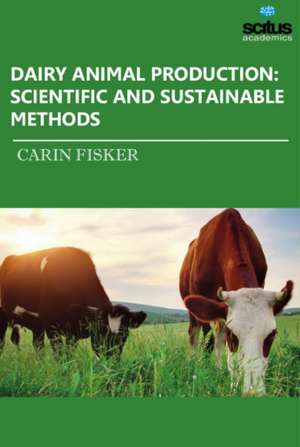Dairy Animal Production: Scientific & Sustainable Methods
Editat de Carin Fiskeren Limba Engleză Hardback – 16 feb 2017
Preț: 906.03 lei
Preț vechi: 1104.93 lei
-18% Nou
Puncte Express: 1359
Preț estimativ în valută:
173.37€ • 188.91$ • 146.09£
173.37€ • 188.91$ • 146.09£
Carte indisponibilă temporar
Doresc să fiu notificat când acest titlu va fi disponibil:
Se trimite...
Preluare comenzi: 021 569.72.76
Specificații
ISBN-13: 9781681174211
ISBN-10: 1681174219
Pagini: 284
Dimensiuni: 155 x 230 mm
Greutate: 0 kg
Editura: Scitus Academics LLC
Colecția Scitus Academics LLC
ISBN-10: 1681174219
Pagini: 284
Dimensiuni: 155 x 230 mm
Greutate: 0 kg
Editura: Scitus Academics LLC
Colecția Scitus Academics LLC
